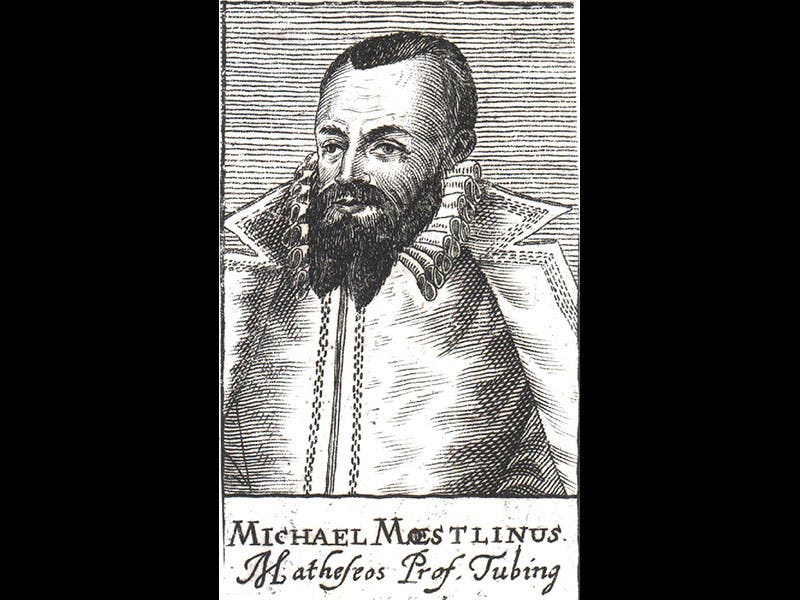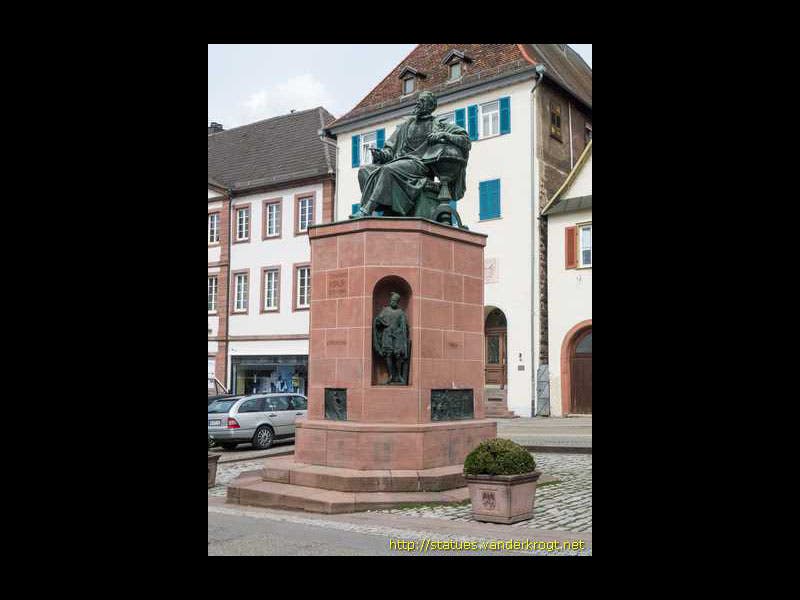Scientist of the Day - Michael Maestlin
Michael Maestlin, a German astronomer, was born Sep. 30, 1550. Maestlin taught astronomy at the University of Tübingen, in southwestern Germany. In the 50 years that had passed since Copernicus proposed that the earth is a planet and moves around the sun, very few astronomers had fully adopted the Copernican hypothesis--just ten, to be precise. Maestlin was one of those ten. In 1591, Maestlin encountered a young theology student at Tübingen named Johannes Kepler, to whom he passed on his enthusiasm for the heliocentric system. Kepler, not yet 21 years old, took to it immediately, as often happens when the young are exposed to revolutionary ideas, and became the next member of the "ten." In 1596, when Kepler wrote his first book, he didn't bother to prove or defend the Copernican system--he just took it for granted and went from there. This book, the Mysterium cosmographicum, was published in Tübingen (Kepler was then teaching in Graz, in Austria), and Maestlin saw it through the press, adding an introduction and a treatise of his own, annotating Kepler's text, and even choosing to include a new edition of the Narratio prima of George Rheticus, the book that, when first published in 1540, had laid the groundwork for Copernicus' own book of 1543. Maestlin updated Rheticus' text and added notes and diagrams to it as well. So the Mysterium was almost as much Maestlin's book as it was Kepler's. We have this book in the History of Science Collection at the Library; it is the earliest of 25 Kepler works that we own in their first editions, giving us one of the finest Kepler collections in the country.
Maestlin is remembered by one woodcut portrait (first image above). There is also a monument to Johannes Kepler in his home town of Weil-der-Stadt (second image) that is adorned with statues of the four important astronomers who greatly influenced Kepler. Maestlin is one of those four, along with Copernicus, Tycho Brahe, and Jost Burgi; we see Maestlin’s niche statue as our third image. Also on the Kepler memorial are several plaques, one of which (fourth image) depicts Maestlin, the bearded teacher, instructing young Kepler and his fellow students.
Dr. William B. Ashworth, Jr., Consultant for the History of Science, Linda Hall Library and Associate Professor, Department of History, University of Missouri-Kansas City. Comments or corrections are welcome; please direct to ashworthw@umkc.edu.








![Using an astrolabe to measure the depth of a well, woodcut in Elucidatio fabricae vsusq[ue] astrolabii, by Johannes Stöffler, 1513 (Linda Hall Library)](https://assets-us-01.kc-usercontent.com:443/9dd25524-761a-000d-d79f-86a5086d4774/a998eb50-55d2-4a88-ace2-a50aa5fa86e7/Stoffler%201.jpg?w=210&h=210&auto=format&fit=crop)

